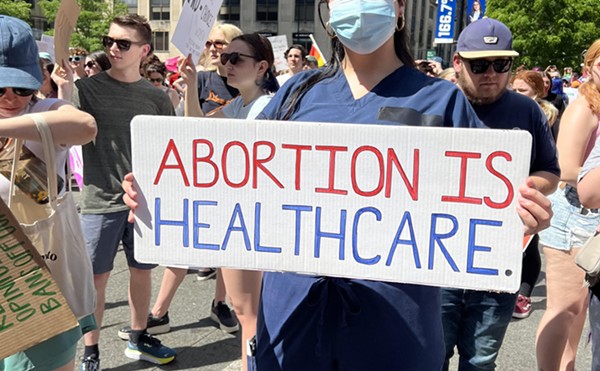The pandemic isn't over, as UC Health President and CEO Dr. Richard Lofgren said during a Hamilton County news briefing this week.
"It is active and alive and is actually overwhelming our health systems," he told Hamilton County Commissioner Denise Driehaus and Hamilton County Public Health Commissioner Greg Kesterman.
That strain on state hospitals is what has prompted Gov. Mike DeWine to mobilize 1,050 Ohio National Guard members. A press release from the governor's office says the guard will "help with patient transport, housekeeping and food services," and that 150 of them are specially trained medical personnel who will "help meet critical needs at hospitals and testing locations."
They're slated to be in place Monday.
According to Ohio Department of Health data, there are more than 4,700 Ohioans hospitalized for COVID-19, which it says is equivalent to one in every five hospital patients.Governor DeWine has mobilized 1,050 members of the @OHNationalGuard to help relieve the hospital staffing strain caused by the rising number of hospitalized COVID-19 patients. More information: https://t.co/M1kviZxi8M pic.twitter.com/NTqtwFeNeO
— Governor Mike DeWine (@GovMikeDeWine) December 17, 2021
"This is the highest number of people hospitalized with COVID-19 this year, and the number of hospitalized patients is rapidly approaching an all-time high," reads the release from DeWine.
As Lofgren indicated this week, hospitals in Northern Ohio have had to suspend elective surgeries, and medical centers across the rest of the state may have to consider the same if numbers continue to trend upward.Hamilton County Public Health Commissioner Kesterman said this week that the county has 8,000 active cases of COVID-19 or about 455 per day. As of Dec. 15, 576 people are hospitalized with COVID-19, 142 are in the intensive care unit and 102 are on ventilators. (Kesterman noted that all figures are a little low because the Ohio Department of Health had only recently added cases that it previously hadn't counted. That may continue.)
"We are seeing at this point the most number of patients hospitalized in southwest Ohio since the peak in the fall and winter last year," UC Health's Lofgren said.
Lofgren said that colleagues in Cleveland have indicated the city is in "dire straits" with coronavirus, with more cases now than at any point in the pandemic. He said that patients requiring critical care and on ventilators are in emergency rooms for days before beds become available.
"Their staff is stretched, they're canceling elective procedures, they're diverting hospitals. They simply do not have the capacity," Lofgren said. "And when I look at their path and trajectory... I feel like we in southwest Ohio may only be a couple weeks behind," he added.
As residents gear up for the ongoing winter holidays, Lofgren warns that critical care for non-COVID patients is being delayed because many healthcare staff have left the industry and the remaining ones had little relief since the pandemic began in earnest in March 2020. Cincinnati doctors have highlighted this point throughout the year, especially as the Delta variant caused a dramatic, sustained spike in cases, including in children.
"Last year when we peaked (in COVID-19 cases) in the pandemic, it really stretched our hospital capacity. We had a lot more staff than we do now," Lofgren said. "Last year, we actually asked our frontline providers to do heroic work and extra shifts... and maintaining a level of activity that's just not sustainable. As we think about this current surge, we're very concerned about the fact that we really have exhausted our human capital to be able to respond to that."
"What people need to understand is when we get overwhelmed as a healthcare system with COVID, not only does it push our ability to take care of COVID patients, it pushes our ability to take care of non-COVID (patients)," Lofgren continued.
Two people in central Ohio have the new Omicron variant, Kesterman said, which is quickly spreading throughout the United States and is concerning officials as much as Delta did this year. Kesterman noted that the patients had no recent travel activity, which indicates that they had gathered with someone else who had traveled and spread the virus.
"We don't have any (Omicron cases) here in Hamilton County that we know of, but the likelihood that we will soon see cases is extremely high," Kesterman said.
Driehaus and Kesterman stressed that Hamilton County continues to provide free COVID-19 vaccinations and also is offering free at-home testing kits. Vaccines are available to people ages 5 and up. Learn more and find locations at testandprotectcincy.com.
Sign up for our weekly newsletters to get the latest on the news, things to do and places to eat delivered right to your inbox.






